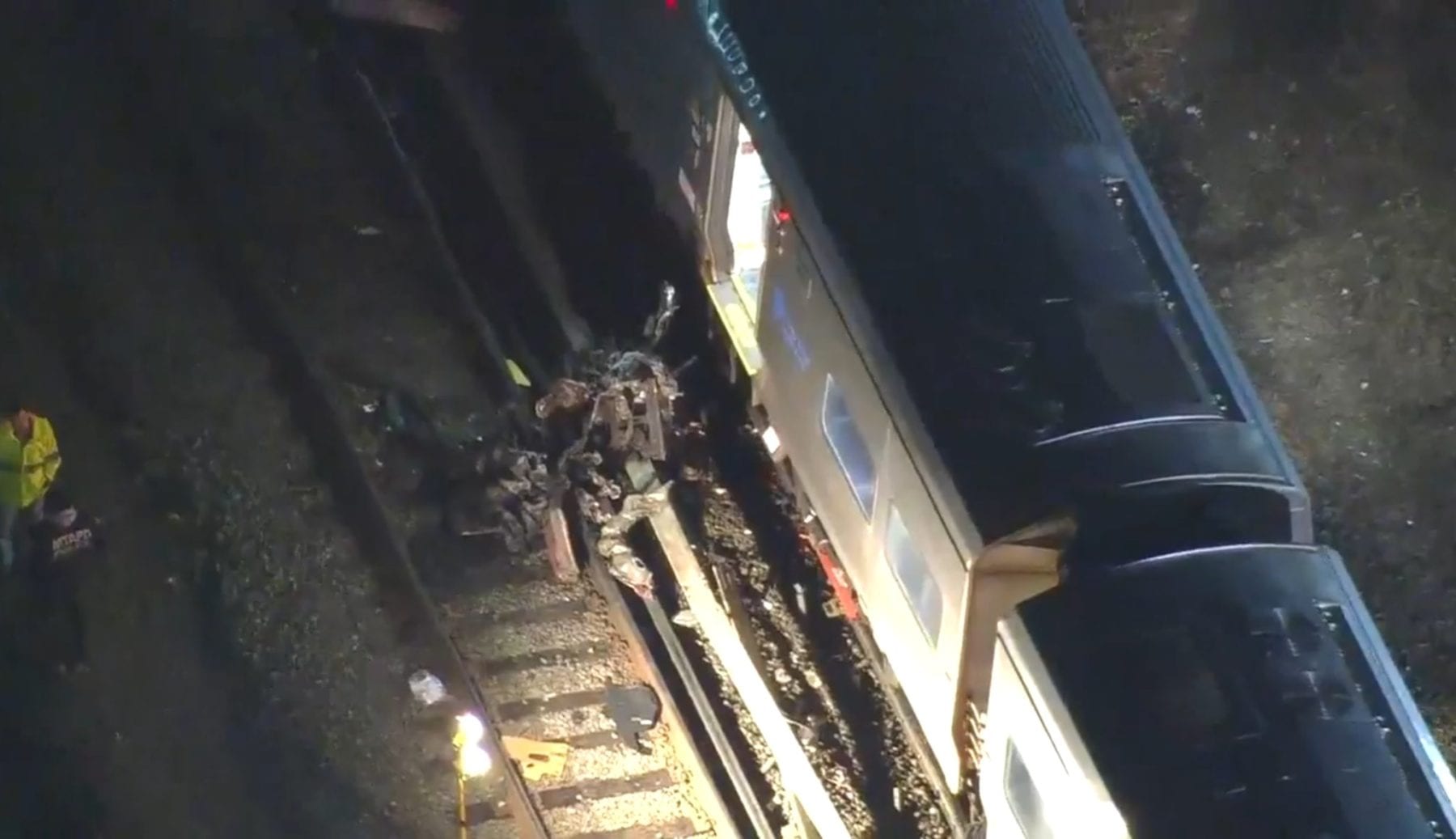There was a train accident in Long Island last night. A train heading east, leaving the Westbury station struck a vehicle. The vehicle was at a grade crossing. In the anticipation of the upcoming train, the gates were lowered at that crossing but the driver went around the lowered gates. After the initial impact, a second, westbound train hit the damaged vehicle for the second time. That train then derailed as it was approaching the station.
That second train, after it derailed, crashed into the station, specifically the reinforced concrete high platform which are typical on LIRR territory. This concrete platform impaled the train and sheered through at least the first car. Three people died in the vehicle that was struck. Unbelievably, only seven passengers were transported to hospitals with non-life treating injuries. The engineer of the second train simply got lucky. Delays and service cancellations were, still are, and will continue to be significant.
It is my opinion that the worst collisions are those that are easily preventable. In this case it seems that it was the poor judgement of truck driver that lead to this crash.
When I’m not writing about cars for this here website, I work in the transportation industry. In my twenty years of experience I worked on airports, subway, and commuter rail projects. I know enough about buses and locomotives to be dangerous. For a brief period of time I was an automotive component test engineer. I have dabbed into security systems design. I have also designed railroad grade crossings.
In all this, I still don’t know how to prevent car versus train accidents at grade crossings. There are strict design standards for grade crossings; the equipment used, the speed of the upcoming trains, the angle at which the road and the tracks intersect, road speed limits – everything is taken into account. And yet, here we are, another deadly train-car accident.

Image source: cpuc.ca.gov
In other parts of the world, four quadrant gates are used. Meaning, that the entire grade crossing is protected from road vehicles potentially entering it. This sounds like a good idea as it would prevent vehicles from entering the area from all directions. But this design prevent trapped vehicles from escaping the grade crossing area. Those also completely shut down the road when the system malfunctions. Because these are fail-safe systems, the gates drop upon system malfunctions. This may prevent emergency vehicle access.
Truth be told, I do not know how to prevent such accidents. One way would be to elevate either tracks or roadways such that there would a bridge in place of a grade crossing. That is expensive and not always possible. Four quadrant gates have their faults, too. Public outreach clearly isn’t working. But I’m open to ideas.
Please don’t drive around lowered gates or flashing lights at grade crossings. When you see an upcoming train, stop. It’s likely that the train is going faster than it seems. The train cannot turn to avoid an obstacle. Trains cannot stop suddenly either – it’s physics, multi-piston Brembos won’t help. That Superman movie lied to you when it showed him stopping the train.
Top image source: twitter.com/LIRRstats


Leave a Reply